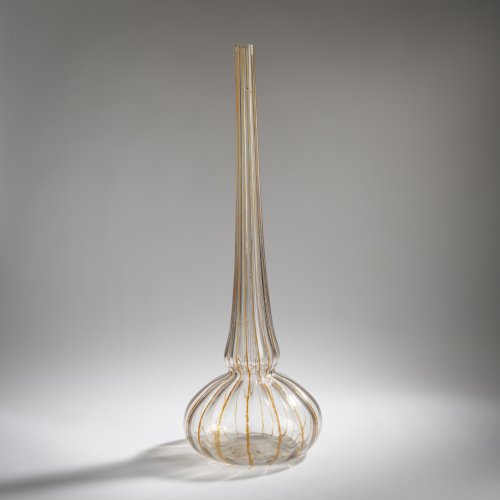Biography
The company Verreries Schneider was founded at the end of 1913 by two brothers, Ernest Schneider (1877-1937) and Charles Schneider (1881-1952). The course for the brothers' career in the glass industry had been set many years earlier. After the tragic accidental death of their father, their mother moved, together with her three children, to the economically prosperous Nancy.
From 1897, Charles received training as an engraver at the Daum glass factory and learned drawing under the tutelage of Henri Bergé. In parallel, he studied at the École des Beaux-Arts in Nancy. From 1904, Charles continued his studies at the École des Beaux-Arts in Paris, specialized in painting and medal engraving and received several awards for his skills in this field. His older brother Ernest Schneider, on the other hand, was employed in managerial positions at Daum. His many tasks in the glass manufactory included the internal management of the artistic department as well as important areas in the commercial administration.
In 1913, the Schneider brothers founded their company. The first company foundation together with their architect friend Henri Wolff closed after only three weeks. The second establishment finally traded under the name of Verreries Schneider. They acquired a small glass factory in the Paris suburb of Épinay-sur-Seine. Before the First World War, production consisted mainly of pharmacy vials as well as flacons for perfume manufacturers. In 1914, the manufactory was closed.
After being discharged from military service, the two brothers reopened the company. The company deposited the new brand name Le Verre Français in 1918. From then on, products were marketed with two signatures: Schneider and Le Verre Français. In accordance with the taste of the time, which was oriented towards Art Nouveau, Schneider designed - in addition to tableware and drinking glasses - colorful art glass with floral decorations, executed in multiple layers. The company appeared with ornamental goblets and foot bowls of the famous series ‘Coupes Bijoux‘ and ’Coups à pied noir‘, which today characterize our image of the glass manufactory. In addition to stylized plant motifs and later geometric ornaments in the style of Art Deco, objects with diffuse color gradients were created. This look was achieved either by strongly bubbled glass or by colored powder inclusions, for which powdered glass was mixed with metal oxides and melted into the glass gather. The resulting vases and lamps were also popular in the American market. aspan>
The objects of the two brands 'Le Verre Français' and 'Schneider' were sold through various distribution channels. The former was intended to make the manufactory's glass art more popular and accessible to a wider range of buyers. These objects were offered in the art departments of major department stores, such as the Galerie Lafayette. The objects of the 'Schneider' line, on the other hand, were mainly offered in specialized art galleries (Jules Houry) and are among the rarer examples today. The signature 'Charder' is an abbreviation for 'Charles Schneider'.
At the 1925 Paris World's Fair, Schneider was at its peak. The glass manufactory showed huge glass windows, lighting and selected objects. The 1929 stock market crash and economic crisis hit the manufactory hard. In response to falling demand, Schneider produced smaller quantities in the 1930s and switched to using pressed glass. In 1937, insolvency proceedings were initiated, and in 1938 the company was declared bankrupt.
The family tradition was continued by Charles Schneider's sons Robert Henri (1917-2000) and Charles (1916 - 1984), who opened a new glass manufactory called ‘Cristalleries Schneider' in 1949, first located in Épinay-sur-Seine, later in Lorris. Completely in line with the trends of the 50s, they made vases, ashtrays and candlesticks of crystal glass, the objects bear the signature 'Schneider France'.
Objects by Charles Schneider
-
Sold
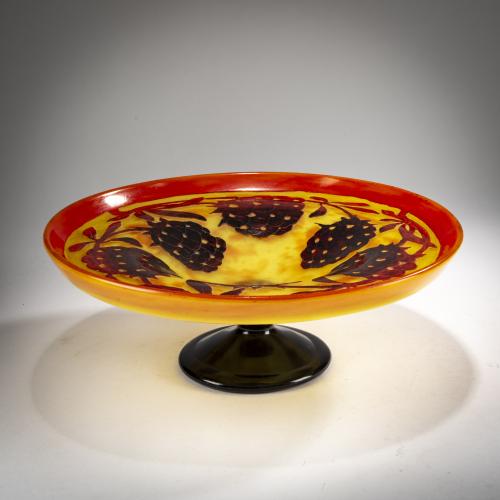
-
Sold
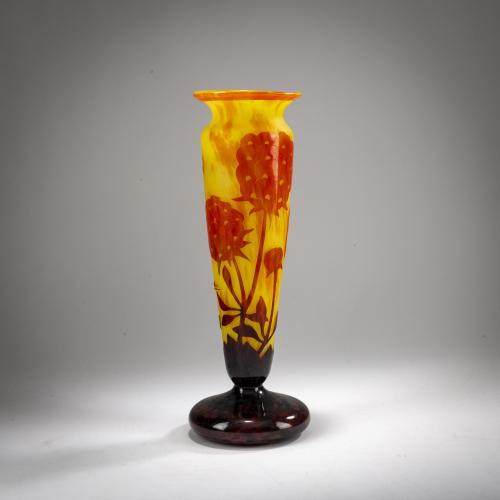
-
In the post auction sale
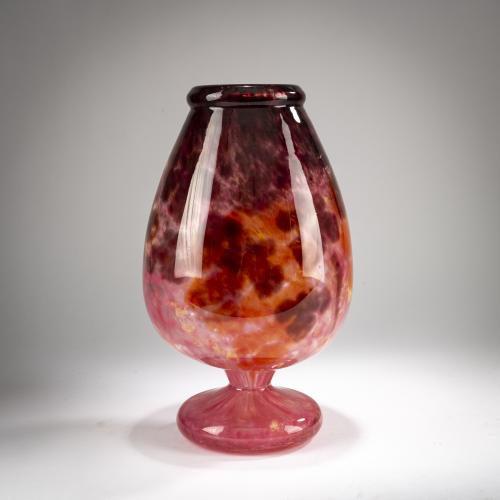
Charles Schneider Schneider, Epinay-sur-Seine
Tall footed vase 'Jades', c. 1924-33
Reserve price: 500 €
-
Sold

-
Sold
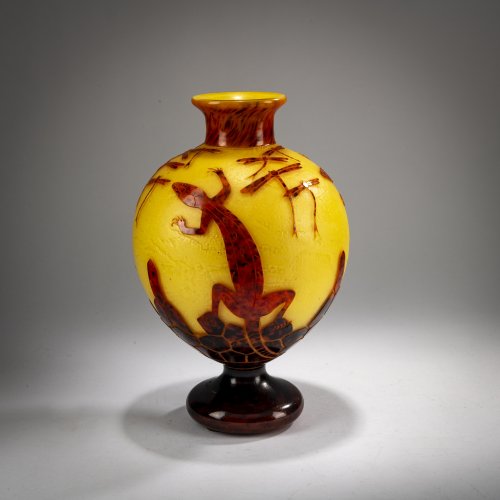
-
Sold
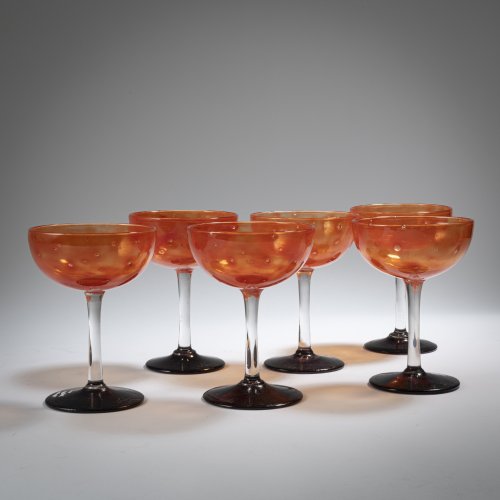
Charles Schneider Schneider, Epinay-sur-Seine
6 champagne bowls 'Bijoux', 1922-26
Hammer Price: 600 €
-
Sold
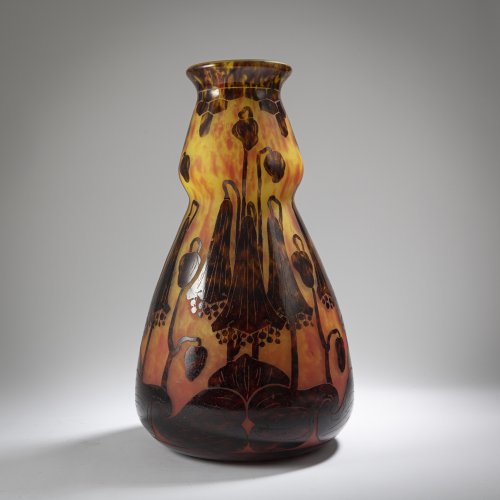
-
Sold
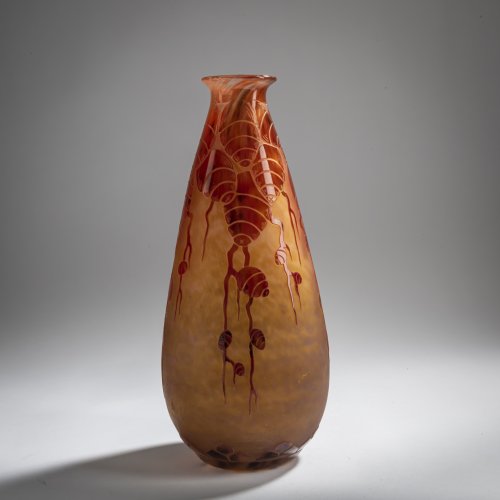
-
Sold
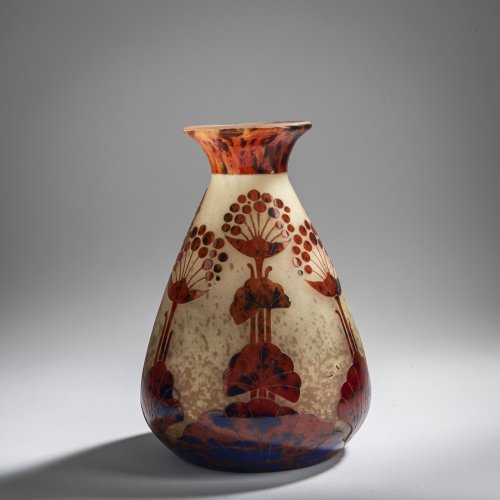
-
Sold
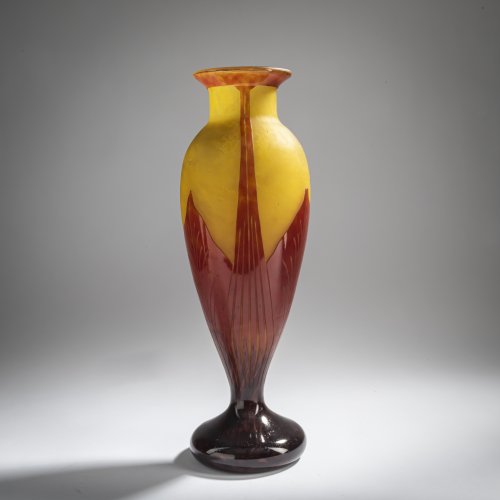
Charles Schneider Schneider, Epinay-sur-Seine
Tall 'Feuilles de Tabac' vase, 1922-23
Hammer Price: 800 €
-
Sold
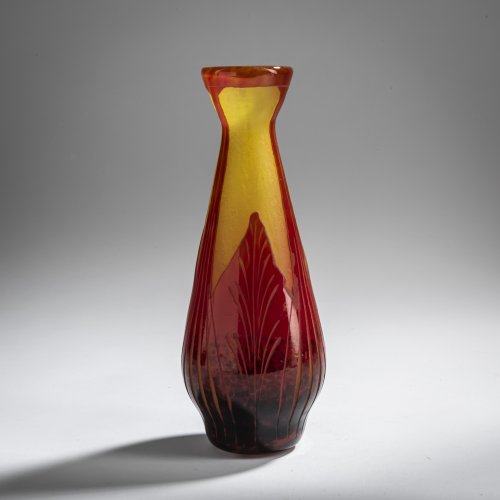
Charles Schneider Schneider, Epinay-sur-Seine
Small 'Feuilles de Tabac' vase, 1922-23
Hammer Price: 370 €
-
Sold
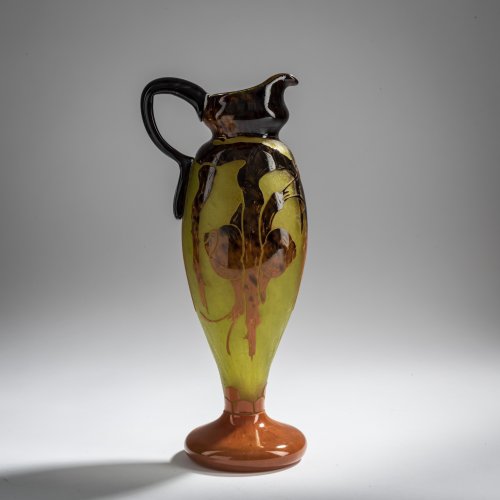
-
Sold
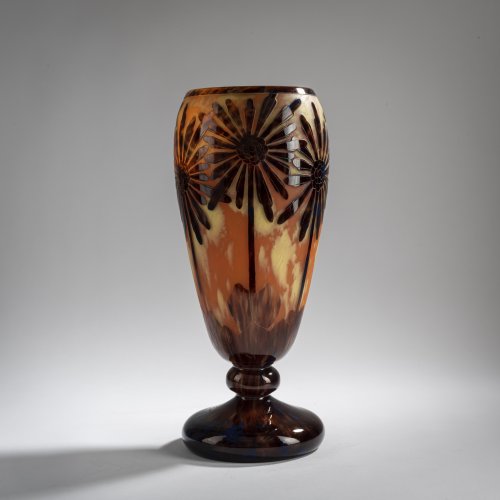
-
Sold
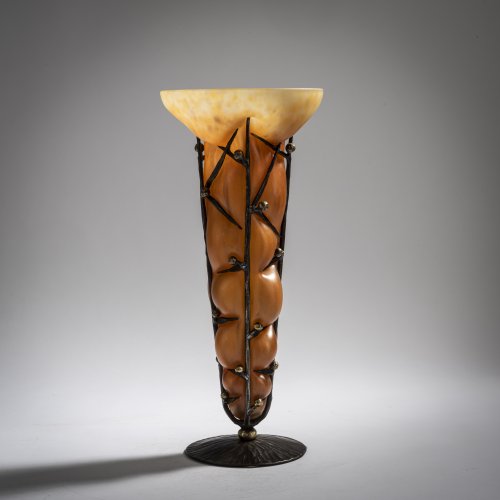
-
Sold
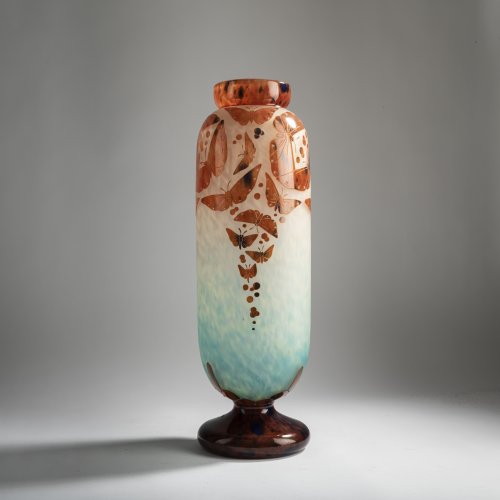
-
Sold
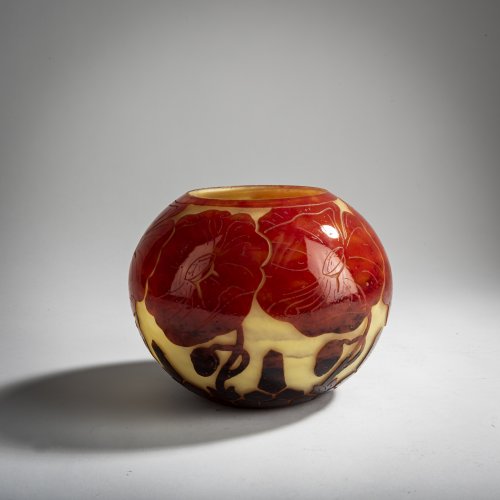
-
Sold
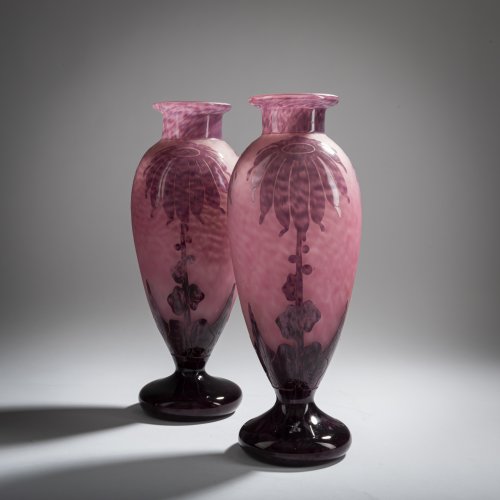
-
Sold
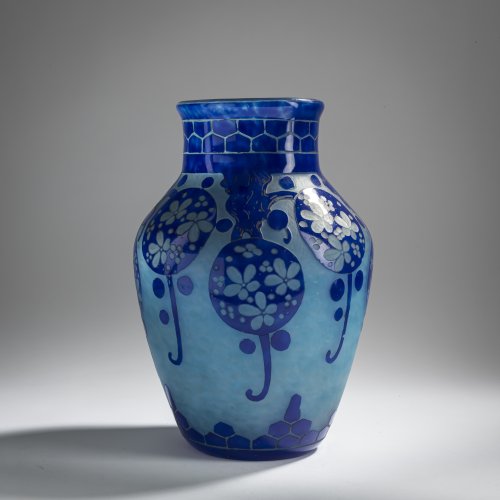
-
Sold
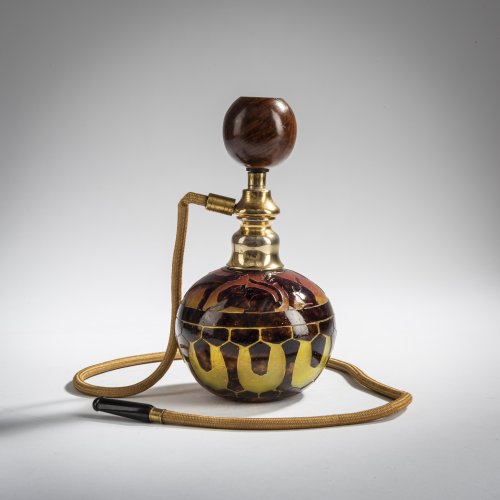
-
Sold
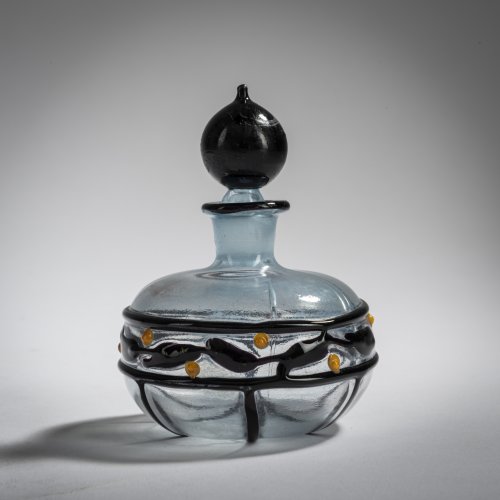
-
Sold
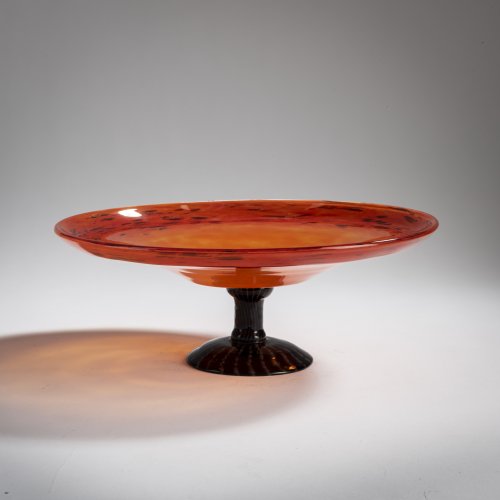
-
Sold
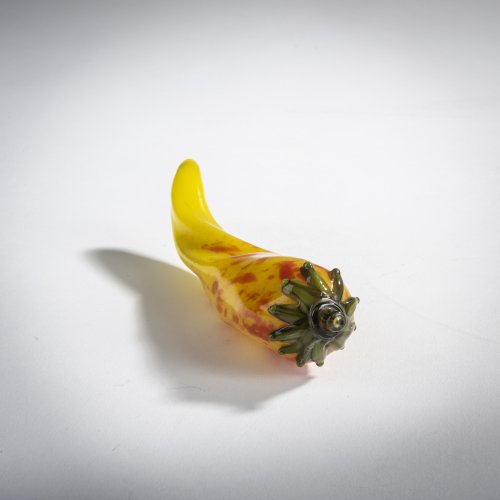
Charles Schneider Schneider, Épinay-sur-Seine
'Fruits et Légumes', 'Poivron', 1920-25
Hammer Price: 1,900 €
-
Sold
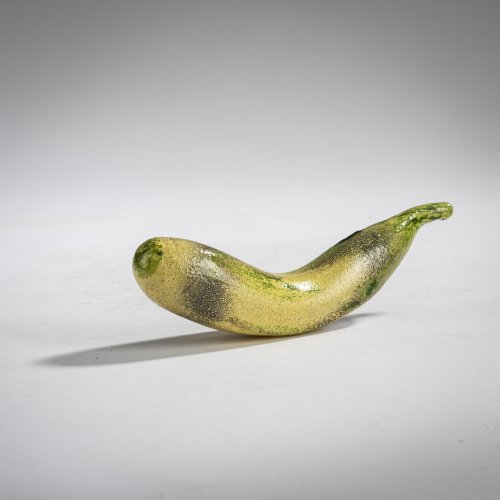
Charles Schneider Schneider, Épinay-sur-Seine
'Fruits et Légumes', 'Courgette', 1920-25
Hammer Price: 2,000 €
-
Sold
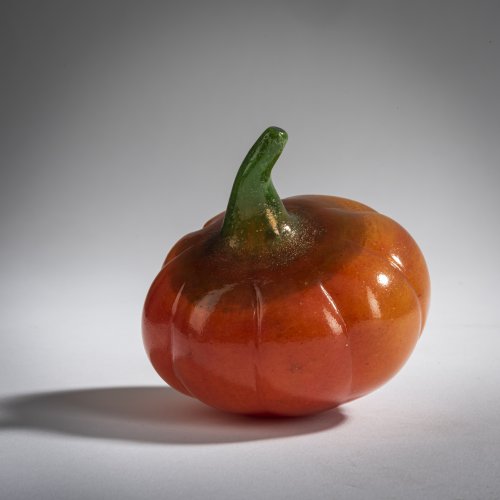
Charles Schneider Schneider, Épinay-sur-Seine
'Fruits et Légumes', 'Tomate', 1920-25
Hammer Price: 2,100 €
-
Sold
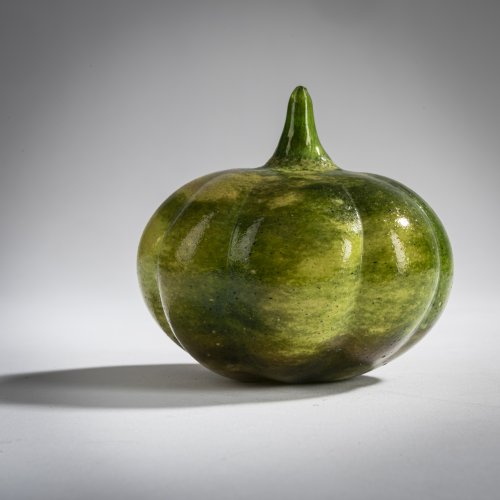
Charles Schneider Schneider, Épinay-sur-Seine
'Fruits et Légumes', 'Tomate', 1920-25
Hammer Price: 1,200 €
-
Sold
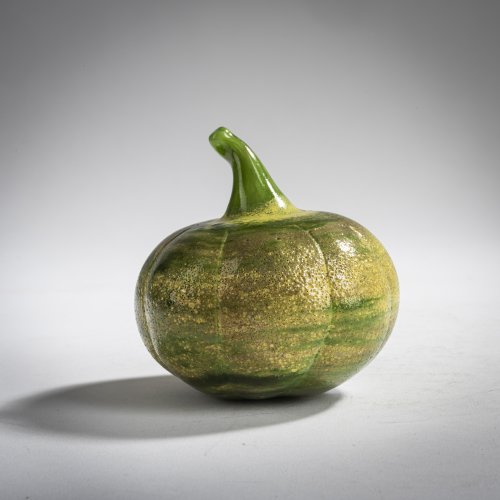
Charles Schneider Schneider, Épinay-sur-Seine
'Fruits et Légumes', 'Tomate', 1920-25
Hammer Price: 1,200 €
-
Sold
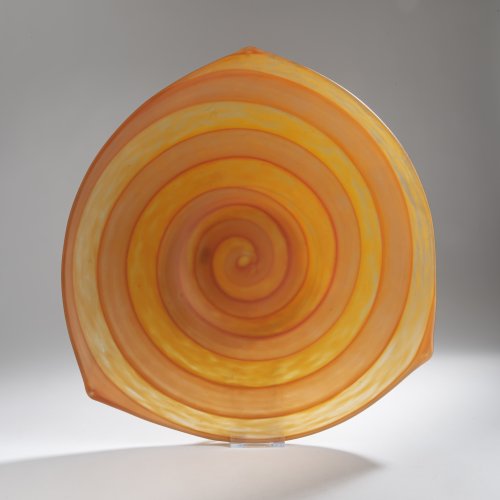
-
Sold
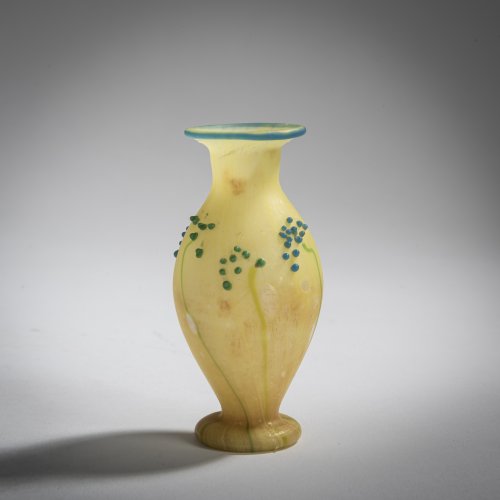
-
Sold
